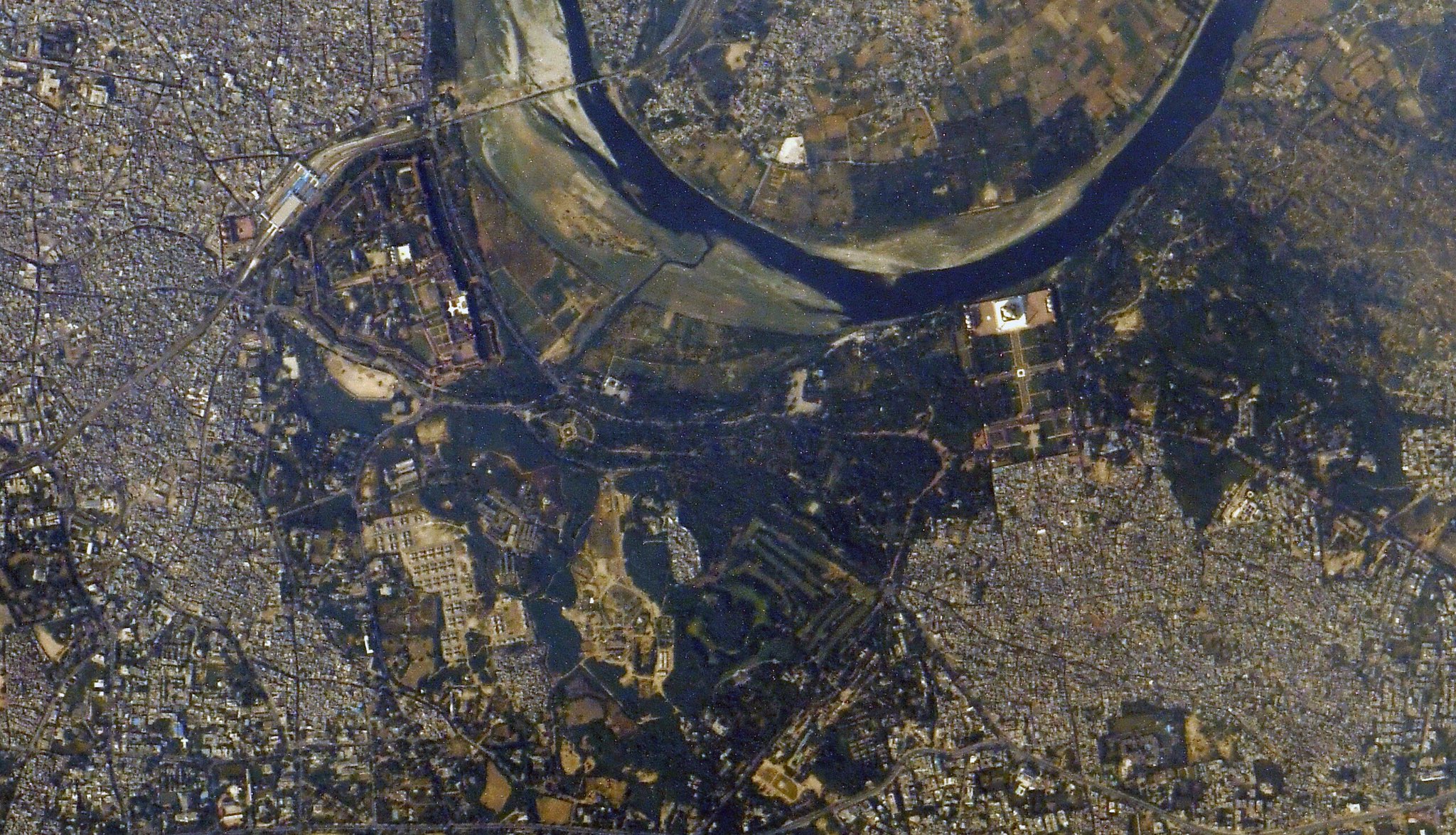[:ja]イワン・ワグナー宇宙飛行士がISSから撮影したインドのアーグラとタージ・マハルです。

アーグラはインドのウッタル・プラデーシュ州最大の都市で、約157万人を要します。世界遺産に登録されているタージ・マハル廟、アーグラ城塞があることで知られます。ガンジス川最大の支流であるヤムナー川沿いに位置する都市で、古代より交通の要所として発展しました。周辺地域における政治、経済、文化の中心です。世界遺産にも定められているタージ・マハルなど多くの観光名所があり、多くの観光客が訪れます。タージ・マハルは、総大理石の墓廟で、ムガル帝国第5代皇帝シャー・ジャハーンが1631年に死去した愛妃ムムターズ・マハルのため建設しました。1632年着工、1653年竣工とされています。インド・イスラーム文化の代表的建築で、1983年にユネスコの世界遺産に登録されています。なお、シャー・ジャハーンは、タージ・マハルと対をなす形でヤムナー川を挟んだ対岸に黒大理石で出来た自身の廟を作ろうとしたとされるが、これは実現しませんでした。
地上の様子はこちらです。

参考文献: Ivan Vagner’s Tweet
地球俯瞰画像を見る: LiVEARTH
[Earthview Wonders] No.1411: Taj Mahal,🇮🇳
Astronaut Ivan Vagner captured from ISS Agra, India.

Agra is a city on the banks of the Yamuna River in the Indian state of Uttar Pradesh, about 210km south of New Delhi. Agra’s notable historical period began during Sikandar Lodi’s reign, but the golden age of the city began with the Mughals. Under Mughal rule, Agra became a center for learning, arts, commerce, and religion, and saw the construction of the Agra Fort, Sikandra and Agra’s most prized monument, the Taj Mahal, built by Shah Jahan as a mausoleum for his favourite empress Mumtaz Mahal. After Independence, Agra has developed into an industrial town, with a booming tourism industry, along with footwear, leather and other manufacturing. The Taj Mahal and the Agra Fort are UNESCO World Heritage Sites.
The local scenery on the ground is as follows.

Reference: Ivan Vagner’s Tweet
See earthview photo gallery: LiVEARTH[:]